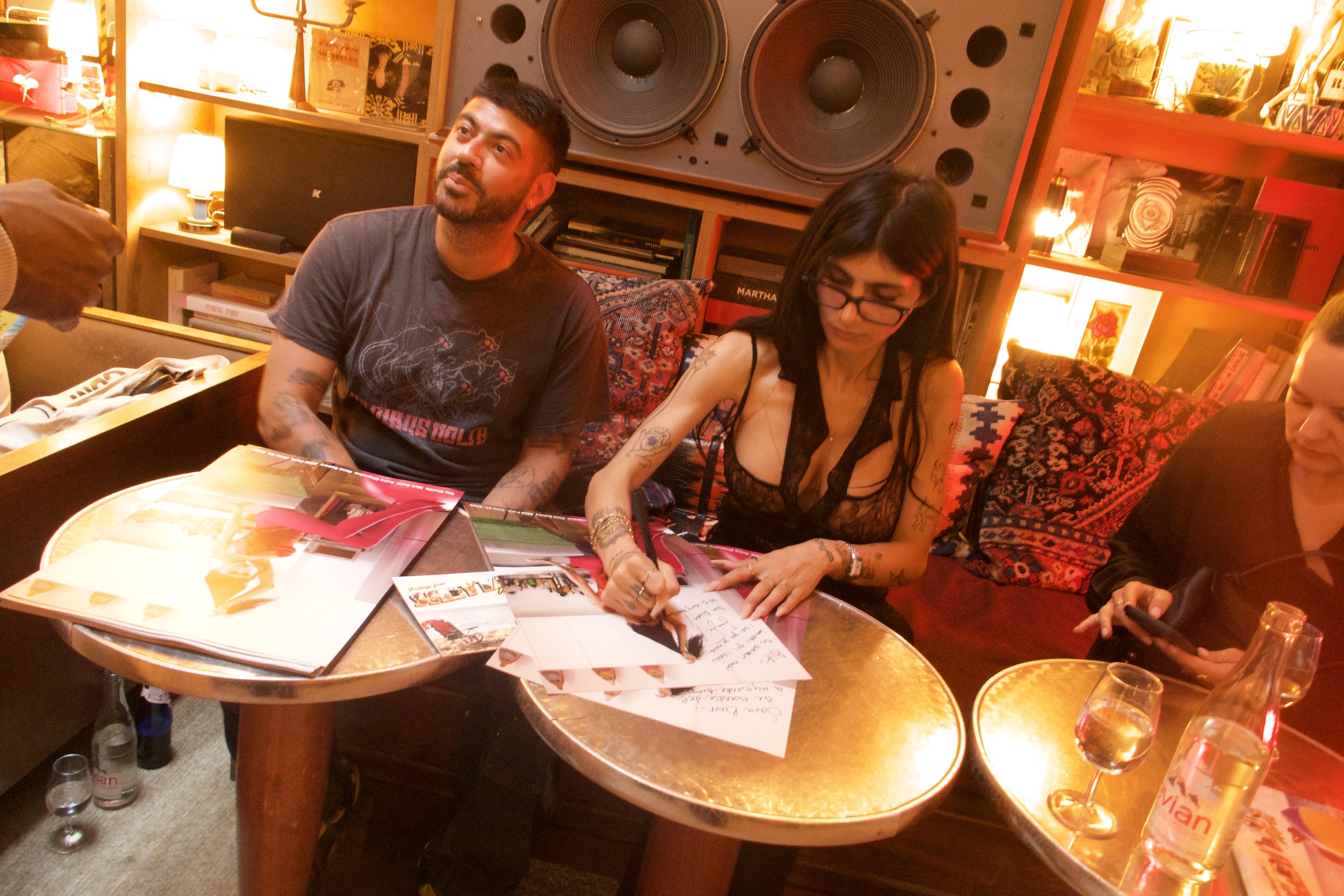text by Karly Quadros
Now I’ve been known to get down to some strange tunes, but it’s not every day that I find myself strapped into a pair of headphones listening intently to a rock.
I’m seated at one of four wooden desks arranged in a square around a sapling in the atrium of WSA at 180 Maiden Lane. The building is all elbows, intricate metal scaffolding from floor to ceiling and a tangle of indoor foliage overhead. To my left, I’m flanked by an enormous man with an enormous coffee with his eyes closed, communing with a craggy chunk of ore that’s over 2 billion years old. To my right is a little girl with a black ponytail, scribbling intently in a notebook, headphones twice the size of her head.
The sonic installation is from Bay Area and New York City musician and technologist Dan Gorelick. Rocks are the product of hundreds of millions of years of eruption, erosion, compression, and transformation—with his technological interventions, Gorelick has managed to squeeze all that time into just a few seconds of sound.
He is one of 115 creatives who presented work and spoke as part of NEW INC’s DEMO 2025 festival, running now until June 22. Beginning in 2014, NEW INC has served as the New Museum’s “creative incubator” for everything from immersive art to innovative proposals for third spaces, providing around eighty artists and entrepreneurs working with new media each year with creative and professional mentorship. Now, with a permanent space on the way in the New Museum’s futuristic new digs on the Bowery, designed by OMA and Shohei Shigematsu and Rem Koolhaas, DEMO 2025 was a peek inside NEW INC’s next chapter.
Things these days are fraught for emerging artists and creatives working at the porous boundary between art, design, and technology—and heaven forbid the work have any components that are socially, environmentally, or politically-oriented. As the Trump administration takes ruthless aim at the curatorial independence of museums and other cultural institutions, opportunities for exhibition, funding, or mentorship have diminished, whether out of actual lack of resources or fear of retaliation. Meanwhile, the future roles of museums as more than white rooms full of aging paintings has been called into question.
“It’s core to the ethos that artists are thinking about the real world impact of what they’re making, and they’re thinking from the onset about the audience in the reach of their projects,” said Salome Asega, director of NEW INC and DEMO 2025.
Asega, herself an artist, was a NEW INC fellow in 2016 where she received mentorship for her collective nonprofit PWRPLNT, a space for young creatives engaging digital tools, social justice, and innovative storytelling. Her team received mentorship and the assistance they needed to formalize the project including help developing a fundraising strategy and mentors to join the advisory board.
Other artists found a home in NEW INC with work that was too unconventional for traditional art world channels.
“[My brother and I] were raised in and culturally came up in the art world. We speak the same vocabulary and look at similar references,” said Sam Rolfes of Team Rolfes, a DEMO 2025 presenter. “But because that ground was largely infertile for the kind of things we were trying to do, we had to find and create new spaces.”
Five years later, in a full circle moment, Asega became the director of NEW INC. She grew the incubator’s showcase from a small day in which fellows would display their work for a select group of curators, investors, and philanthropists into a three-day festival with installations for the public lasting the entire month. And, of course, admission is free.
“There were never really wide funding opportunities for some of the ideas in our programs,” said Asega. “This has always been us creative problem solving with our members. Even in this moment we’ll continue to do that. We’ll continue to think and dream up new opportunities for sustainability.”
Other presenters from the festival include a kinetic sculpture from MORKANA, a rice cooker symphony by Trevor Van De Velde, plans for an innovative relief hub for NYC gig workers by architect Elsa Ponce, an augmented reality app documenting Black life in Pittsburgh by Adrian Jones, and radical screenprinting from Secret Riso Project. In between interactive installations, viewers were able to catch Collina Strada creator Hillary Taymour talking with writer Kimberly Drew about integrating environmental advocacy and brand strategy or cultural critic Whitney Mallett discussing digital brainrot aesthetics with David Lisbon, curatorial assistant at the Whitney Museum, and Bri Griffin, community designer at Rhizome.
“We’ve always been a program that has embraced the new, the unknown, the not yet named,” said Asega.
NEW INC’s DEMO 2025 showcase installations are on display at WSA at 180 Maiden Lane now until June 22.



































































































































































